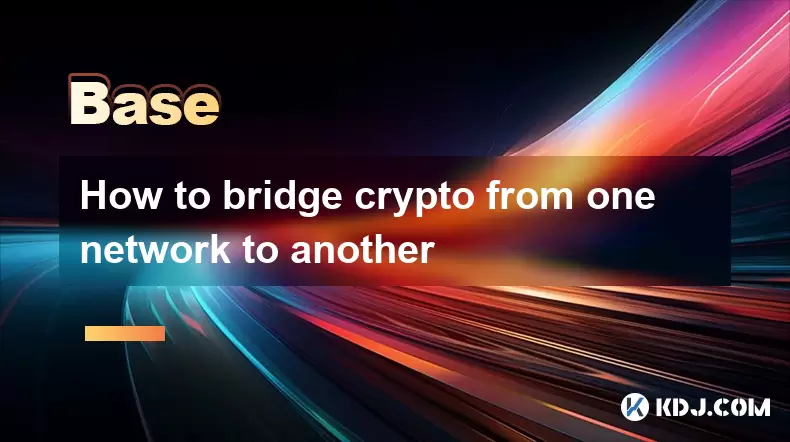-
 Bitcoin
Bitcoin $117,462.8204
-2.03% -
 Ethereum
Ethereum $3,061.1595
1.10% -
 XRP
XRP $2.9139
-2.19% -
 Tether USDt
Tether USDt $1.0002
0.02% -
 BNB
BNB $685.1357
-1.24% -
 Solana
Solana $161.3803
-2.11% -
 USDC
USDC $1.0002
0.04% -
 Dogecoin
Dogecoin $0.1948
-2.92% -
 TRON
TRON $0.2987
-0.89% -
 Cardano
Cardano $0.7330
-1.27% -
 Hyperliquid
Hyperliquid $47.7888
0.13% -
 Stellar
Stellar $0.4514
-2.93% -
 Sui
Sui $4.0169
2.74% -
 Chainlink
Chainlink $15.7088
-2.57% -
 Hedera
Hedera $0.2356
-3.33% -
 Bitcoin Cash
Bitcoin Cash $488.6656
-3.61% -
 Avalanche
Avalanche $21.2955
-1.47% -
 UNUS SED LEO
UNUS SED LEO $9.0415
0.42% -
 Shiba Inu
Shiba Inu $0.0...01332
-0.82% -
 Toncoin
Toncoin $3.0124
-0.62% -
 Litecoin
Litecoin $94.2175
-2.07% -
 Polkadot
Polkadot $4.0011
-0.61% -
 Monero
Monero $333.5714
-3.46% -
 Uniswap
Uniswap $9.1114
-1.56% -
 Dai
Dai $1.0000
0.02% -
 Ethena USDe
Ethena USDe $1.0005
0.00% -
 Bitget Token
Bitget Token $4.4951
1.87% -
 Pepe
Pepe $0.0...01242
0.47% -
 Aave
Aave $321.9943
0.51% -
 Bittensor
Bittensor $434.1984
5.13%
How to bridge crypto from one network to another
Bridging crypto allows transferring assets between blockchains by locking tokens on one chain and minting equivalents on another, enabling cross-chain interoperability.
Jul 14, 2025 at 04:08 pm

Understanding the Concept of Bridging Crypto
Bridging crypto refers to the process of transferring digital assets from one blockchain network to another. This is necessary due to the fact that different blockchains operate on distinct protocols and consensus mechanisms, which prevent direct interoperability. For example, if you hold Ethereum (ETH) on the Ethereum mainnet and want to use it on a Layer 2 network like Arbitrum or Optimism, you will need to bridge your funds across these networks.
The core idea behind bridging involves locking the original tokens on the source chain and minting equivalent tokens on the destination chain. These newly minted tokens are often referred to as wrapped tokens or bridged tokens, representing the same value but compatible with the new ecosystem.
Selecting a Trustworthy Bridge Protocol
Before initiating any cross-chain transfer, it's essential to choose a reliable and secure bridge protocol. There are several popular options in the market such as:
- Hop Protocol
- Connext
- Arbitrum Bridge
- Optimism Gateway
- Polygon Bridge
Each of these platforms has its own set of features, supported chains, fees, and security measures. You should verify the legitimacy of the service by checking community feedback, audit reports, and whether it’s officially endorsed by the project you’re interacting with.
Always ensure that you are using the official website of the bridge to avoid phishing scams. Never input private keys or sign transactions unless you are certain about the authenticity of the platform.
Preparing Your Wallet for Cross-Chain Transfer
To proceed with bridging, you must have a compatible wallet such as MetaMask, Trust Wallet, or WalletConnect integrated into the bridge interface. Here’s how you prepare:
- Make sure your wallet is connected to the source blockchain where your funds are located.
- Confirm that you have enough native token (e.g., ETH for Ethereum-based transfers) to cover gas fees on both the sending and receiving chains.
- Double-check that the token you intend to bridge is supported by the selected bridge protocol.
Once everything is ready, navigate to the bridge’s user interface and connect your wallet. You’ll typically see an option to select the origin and destination chains, along with the amount you wish to transfer.
Initiating the Bridging Process
After connecting your wallet and selecting the appropriate chains, follow these steps carefully:
- Choose the token you want to bridge.
- Enter the amount you wish to send.
- Review the estimated gas fees and transaction time.
- Confirm the transaction in your wallet extension.
- Wait for the transaction to be finalized on the source chain.
During this waiting period, the smart contract locks your tokens and initiates the minting process on the target chain. Depending on the network congestion and the efficiency of the bridge, this could take anywhere from a few minutes to over an hour.
It’s crucial to keep your browser open and not close the tab until the transaction is complete. Some bridges may provide tracking tools or notifications to monitor the progress of your transfer.
Receiving Funds on the Destination Chain
Once the bridge completes the process, the wrapped version of your token will appear in your wallet on the destination chain. To access these funds:
- Switch your wallet’s network to the target blockchain.
- Check your balance to confirm receipt of the bridged tokens.
- Optionally, you can swap the wrapped token back to the native version if supported by the ecosystem.
If there is a delay or failure in receiving the tokens, check the transaction hash on a blockchain explorer like Etherscan or Blockchair. Most bridges offer customer support or FAQs to help troubleshoot common issues.
In some cases, especially with decentralized bridges, you might need to wait for multiple confirmations or interact with a secondary transaction to claim your tokens.
Frequently Asked Questions
Q: Can I bridge any cryptocurrency between networks?
No, only specific tokens that are supported by the bridge protocol can be transferred. Always check the list of supported assets before initiating a transfer.
Q: Are there risks involved in bridging crypto?
Yes, potential risks include smart contract vulnerabilities, loss of funds due to incorrect transactions, and exposure to malicious clones of legitimate bridges.
Q: How much do bridging fees cost?
Fees vary depending on network congestion, the size of the transfer, and the specific bridge used. Gas fees are usually paid in the native token of the source chain.
Q: What should I do if my tokens don’t arrive after bridging?
Review the transaction status using the provided hash. If everything appears successful and the tokens still haven’t arrived, contact the bridge’s support team or consult their documentation for recovery procedures.
Disclaimer:info@kdj.com
The information provided is not trading advice. kdj.com does not assume any responsibility for any investments made based on the information provided in this article. Cryptocurrencies are highly volatile and it is highly recommended that you invest with caution after thorough research!
If you believe that the content used on this website infringes your copyright, please contact us immediately (info@kdj.com) and we will delete it promptly.
- GameStop, Bitcoin, and the Inflation Hedge: A New York Perspective
- 2025-07-16 08:30:12
- Solana Memecoins Hit the Big Time: PUMP and Sonic Get Coinbase Listing Boost!
- 2025-07-16 06:50:12
- Core Foundation's Rev+: Fueling Ecosystem Growth Through Revenue Sharing
- 2025-07-16 06:30:17
- Ripple, California, and Collaboration: A New Era for Crypto?
- 2025-07-16 06:30:17
- Uniswap, Mary-Catherine Lader, and the DeFi Evolution: What's Next?
- 2025-07-16 07:10:12
- Roman Storm, DPRK Hackers, and Prosecutors: A Tangled Web
- 2025-07-16 06:50:12
Related knowledge

What is the Bitcoin dominance index
Jul 12,2025 at 10:35pm
Understanding the Bitcoin Dominance IndexThe Bitcoin Dominance Index, often abbreviated as BTC.D, is a metric used to measure Bitcoin's market capital...

What is the Bitcoin dominance index
Jul 11,2025 at 04:29am
What is the Bitcoin Dominance Index?The Bitcoin Dominance Index is a metric used to gauge Bitcoin's market capitalization relative to the total market...

Can crypto be a hedge against inflation
Jul 14,2025 at 12:21am
Understanding the Concept of Hedging Against InflationInflation refers to the general increase in prices and fall in the purchasing value of money ove...

Can crypto be a hedge against inflation
Jul 12,2025 at 12:07pm
Understanding the Role of Blockchain in Decentralized Finance (DeFi)Blockchain technology serves as the backbone of decentralized finance, offering a ...

What are account abstraction wallets
Jul 13,2025 at 01:43am
Understanding the Concept of Account AbstractionAccount abstraction is a term frequently used in the Ethereum ecosystem, particularly within discussio...

What does "gas limit" vs "gas price" mean
Jul 13,2025 at 04:00am
Understanding the Basics of Gas in Blockchain TransactionsIn the Ethereum and other EVM-compatible blockchains, every transaction requires computation...

What is the Bitcoin dominance index
Jul 12,2025 at 10:35pm
Understanding the Bitcoin Dominance IndexThe Bitcoin Dominance Index, often abbreviated as BTC.D, is a metric used to measure Bitcoin's market capital...

What is the Bitcoin dominance index
Jul 11,2025 at 04:29am
What is the Bitcoin Dominance Index?The Bitcoin Dominance Index is a metric used to gauge Bitcoin's market capitalization relative to the total market...

Can crypto be a hedge against inflation
Jul 14,2025 at 12:21am
Understanding the Concept of Hedging Against InflationInflation refers to the general increase in prices and fall in the purchasing value of money ove...

Can crypto be a hedge against inflation
Jul 12,2025 at 12:07pm
Understanding the Role of Blockchain in Decentralized Finance (DeFi)Blockchain technology serves as the backbone of decentralized finance, offering a ...

What are account abstraction wallets
Jul 13,2025 at 01:43am
Understanding the Concept of Account AbstractionAccount abstraction is a term frequently used in the Ethereum ecosystem, particularly within discussio...

What does "gas limit" vs "gas price" mean
Jul 13,2025 at 04:00am
Understanding the Basics of Gas in Blockchain TransactionsIn the Ethereum and other EVM-compatible blockchains, every transaction requires computation...
See all articles

























































































